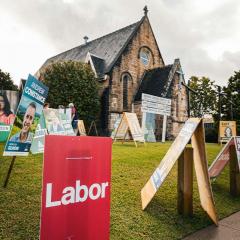For The Conversation: Professor Graeme Orr explains why the High Court challenge in Kooyong and Chisholm is unlikely to win, but may still land a blow.
So read the headlines on Wednesday. But what is the law behind these election petitions?
My new book, The Law of Politics, offers a detailed examination of the laws surrounding Australian elections. Here, I’ll offer a potted explanation of the substance and process at play in the challenges to the results in these two Victorian seats at the 2019 federal election.
Amid all the recent concerns about online political disinformation worldwide, and about MPs’ qualifications in Australia, it is almost reassuring to be back on the terrain of old-fashioned, misleading campaign material.
The petitions allege that physical posters used at polling stations by the Liberal Party were likely to mislead electors in “casting” their votes.
The posters were written in Chinese and used in two seats with significant proportions of Chinese immigrants. Headed “CORRECT VOTING METHOD”, the posters went on to advise electors to vote “1” for the Liberal Party, then number the other boxes. The posters were authorised, in small print at ankle height, by the Liberal Party. But their appearance aped the purple and white used by Australian Electoral Commission posters.
Outside South Australia, there are no “truth in political advertising” laws in Australia. So what constitutes the offence of misleading an elector in casting a vote?



